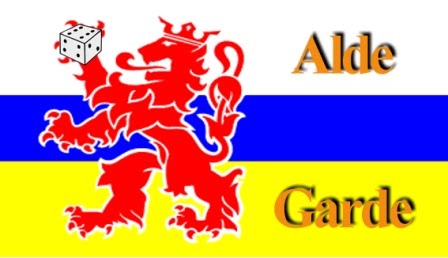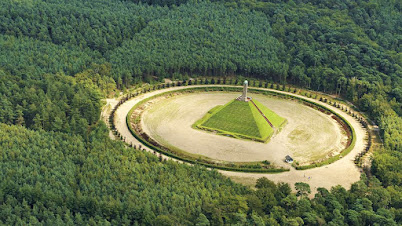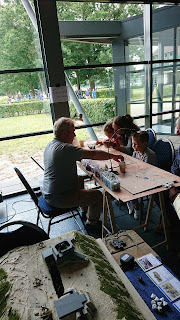Maybe a strange title, but many people don't known, that in the Netherlands there is really a pyramid.
Of course not an Egyptian one but a more recent French one.
"A French one?" you may ask. And yes, indeed a French one; build in 1804. So what is the story? We will tell you. In 1804 a French/Batavian army was concentrated in the middle of the Batavian Republic near the small city of Zeist. Its commander was general Auguste Frédéric louis Viesse de marmont (1774-1852) who had served with napoleon Bonaparte in Toulon, Egypt and Italy.
In 1804 a French/Batavian army was concentrated in the middle of the Batavian Republic near the small city of Zeist. Its commander was general Auguste Frédéric louis Viesse de marmont (1774-1852) who had served with napoleon Bonaparte in Toulon, Egypt and Italy.
The army was ment to take part in a planned invasion of England and training took place in a new erected camp in the neighbourhood of Zeist.
But as training was finished and the troops got bored, Marmont had the great idea to let the troops build a pyramid as he had seen in the Egyprian campaign. So work started on September 10th and was finished on October 7th 1804 or in 28 days.
Underneath a print of the pyramid in 1804
The pyramid itself had a base of 43,60 m x 43,60 m en the top measured 6,20 m x 6,20 m. On it was placed a woorden obelisk with a height of 13m.
As the pyramid itself is 19,20 m (or 40 steps of 48 cm each) the total height is appr. 34,10 m.
The pyramid was made of sand with on the outside turf
The drawing underneath (from 1805) stated a height of 36m.

There were memorial tablets on each side of the pyramid with information of napoleon's victories, about Marmont and about the troops who build the pyramid. These stone tablets arrived in march 1805.
 In April 1805 Mamont bought the ground on which the pyramid was built and erected 3 houses to be used by some old soldiers to guard the pyramid which can been in the picture underneath of 1807. they lived there for some 10 years.
In April 1805 Mamont bought the ground on which the pyramid was built and erected 3 houses to be used by some old soldiers to guard the pyramid which can been in the picture underneath of 1807. they lived there for some 10 years.
In Oktober 1805, the pyramid was officially named Mont Marmont or Marmont Mountain.
But of course against the will of Marmont who must have been very angry, in 1806 the new Dutch King Louis Napoleon renamed the pyramid after the great 1805 victory of his brother Napoleon: the Pyramide of Austerlitz.
The village nearby which arised out of the settlement of traders around the military camp was also called Austerlitz and exists (as does the pyramid itself) until today.
So what happened to the pyramid until today?
In 1806 the wooden obelisk on top leaned over, was later corrected but in 1808 was torn down.
In the following years the weather influenced the mount a great deal which is shown on the picture of 1866.
In fact, for almost 90 years nothing happened and the mount shrunk to around 20m until some remains of the tablets were found and the owner of the land (who's family had bought the ground from Marmont in 1816) got the idea of restore the mount.
So in 1894 a new obelisk, now in stone, was erected on the pyramid which gave the pyramid a new appearance as can be seen on a picture of 1905.
In 1920 is looks like this, new stairs were added.
After that in various years work had to be done to repair the damage of the weather (rain) on the pyramid and to keep the woods away from the mount as these close in on the mount as can be seen on picture of 2001.
Again a great restauration took place, woods were cleared around the mount, the turf again received the steps as of a real pyramide and a picture how it looks after restauration in 2008

and its surroundings from above:
Some pictures when we visited it in 2021. The last 4 pictures are from the restored tablets.





































































